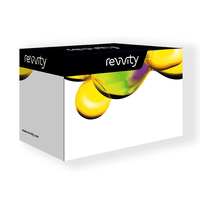Background
Phenylketonuria (PKU) is a disorder of amino acid metabolism that was recognized as a genetic defect as early as 1930. Phenylalanine is an essential amino acid that is converted to tyrosine by action of the enzyme phenylalanine hydroxylase. A block in this reaction due to deficient activity of phenylalanine hydroxylase causes PKU and results in severe central nervous system symptoms. Phenylalanine hydroxylase requires tetrahydrobiopterin as a cofactor and its deficiency, caused by an enzyme defect in the synthesis or recycling of tetrahydrobiopterin, can also result in PKU. The incidence of PKU is approximately 1 in 12,000 Caucasians. Historically, newborn screening originated with Dr. Robert Guthrie who developed a test for elevated phenylalanine (PKU) in dried blood spots.
Clinical
PKU babies typically appear normal at birth and in the neonatal period. Infants may later exhibit irritability, posturing, increased deep tendon reflexes, a peculiar “mousy” odor, and vomiting. Pale pigmentation develops in hair and skin, and seizures are sometimes present. Phenylalanine accumulates within the first days of life and tyrosine levels tend to be low. Although various phenylalanine metabolites are present, phenylalanine itself appears to be the toxic molecule in PKU. High phenylalanine levels prevent transport of other amino acids across the blood-brain barrier, inhibiting synthesis of key neurotransmitters and disrupting protein synthesis in the brain. This produces severe intellectual disability and white matter disease.
Women with untreated PKU who become pregnant are at high risk for having newborns with neurological damage. This is caused by the high phenylalanine levels in the untreated mother that cross the placenta during pregnancy and are toxic to the developing fetus. Mothers affected with PKU need to be on dietary control prior to conception to avoid the toxic effects of phenylalanine on their baby.
Testing
Newborn screening for PKU began with the use of a bacterial bioassay. Subsequently greater sensitivity has been achieved by the implementation of fluorometric methods and tandem mass spectrometry. The latter technology allows for measurement of both phenylalanine and tyrosine, showing elevated phenylalanine levels in conjunction with an increased phenylalanine to tyrosine ratio that is indicative of PKU. This methodology makes PKU screening effective, reliable, and efficient. Several hundred DNA mutations in the phenylalanine hydroxylase gene can cause PKU (98% of cases), as well as mutations in other genes necessary for tetrahydrobiopterin production (2% of cases). All newborns with PKU should be tested for tetrahydrobiopterin defects. Hyperalimentation with parenteral amino acid supplementation produces elevated phenylalanine levels in non-PKU infants, but the phenylalanine to tyrosine ratio is not elevated. Some infants have mutations in phenylalanine hydroxylase that result in mild hyperphenylalaninemia and no serious neurological disease.
Treatment
Patients with PKU need to maintain normal, physiological levels of phenylalanine and tyrosine for life. Studies have shown that periods of elevated Phenylalanine affect brain development and function. Newborns diagnosed with PKU should begin dietary treatment as soon as possible. Several commercial PKU formulas and various phenylalanine-restricted foods are available. Phenylalanine (and tyrosine) should be measured on a regular basis to follow dietary control.
Because the diagnosis and therapy of PKU is complex, the pediatrician is advised to manage the patient in close collaboration with a consulting pediatric metabolic disease specialist and dietician. It is recommended that parents travel with a letter of treatment guidelines from the patient’s physician.
Inheritance
This disorder most often follows an autosomal recessive inheritance pattern. With recessive disorders affected patients usually have two copies of a disease gene (or mutation) in order to show symptoms. People with only one copy of the disease gene (called carriers) generally do not show signs or symptoms of the condition but can pass the disease gene to their children. When both parents are carriers of the disease gene for a particular disorder, there is a 25% chance with each pregnancy that they will have a child affected with the disorder.
Instruments for phenylketonuria (PKU)






























